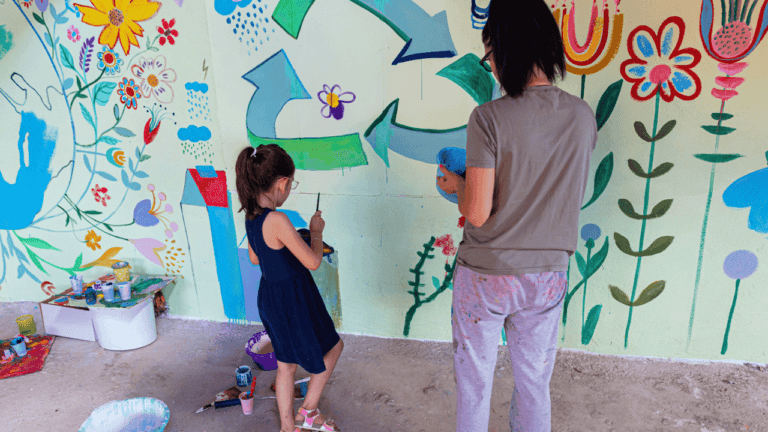Introduction
The ZZ plant, scientifically known as Zamioculcas zamiifolia, has gained immense popularity in recent years, mainly for its resilience and adaptability. With an ability to withstand less than ideal care conditions, it’s often touted as the perfect plant for beginners or those with a not-so-green thumb. In this comprehensive guide, we’ll delve deep into the best practices for ensuring your ZZ plant not only survives but thrives in its indoor setting.
ZZ Plant (Zamioculcas zamiifolia) Indoor Plant Details
| Specification | Details |
|---|---|
| Common Names | ZZ plant, Zanzibar Gem, Zuzu Plant, Emerald Palm |
| Botanical Name | Zamioculcas zamiifolia |
| Family | Araceae |
| Plant Type | Perennial |
| Mature Size | Up to 2-3 feet in height |
| Sun Exposure | Low to bright, indirect light |
| Soil Type | Well-draining potting mix |
| Soil pH | 6.0 – 7.5 (slightly acidic to slightly alkaline) |
| Bloom Time | Rarely blooms indoors; if it does, it’s usually in summer |
| Flower Color | Greenish-white (though rare indoors) |
| Hardiness Zones | 9-11 (for outdoor planting) |
| Native Area | Eastern Africa |
These specifications provide a comprehensive overview of the ZZ plant’s requirements and characteristics, enabling plant enthusiasts to ensure the best care for this hardy and elegant indoor gem.
ZZ Plant (Zamioculcas zamiifolia) Care
As an introduction to ZZ plant care, it’s important to note the forgiving nature of this plant. Native to eastern Africa, the ZZ plant has evolved to thrive in conditions that many plants would find challenging. Its glossy, dark green leaves and tall, graceful stems give it a distinctive appearance that is both modern and timeless.
Light
ZZ plants are quite flexible when it comes to lighting conditions. They can thrive in low light, but they also tolerate bright, indirect light. However, you should avoid placing them in direct sunlight as it can scorch their leaves. For optimal growth, a spot with filtered light or a little morning sun would be ideal.
Soil
Well-draining soil is a must for ZZ plants. A mixture of potting soil with perlite or sand ensures the roots don’t sit in water, preventing root rot. You can also opt for a cactus or succulent mix which naturally provides the drainage this plant craves.
Water
One of the most remarkable attributes of the ZZ plant is its drought tolerance. Thanks to its tuberous roots, it can store water, allowing it to withstand periods of neglect. Water the plant only when the soil is dry to the touch. Overwatering can lead to root rot, which is one of its few vulnerabilities.
Temperature and Humidity
ZZ plants prefer temperatures between 65°F to 79°F (18°C to 26°C) and can handle a variety of humidity levels. However, they do not appreciate sudden temperature fluctuations or cold drafts.
Fertilizer
While the ZZ plant isn’t particularly demanding, feeding it with a balanced liquid fertilizer every month during the growing season (spring and summer) will promote healthier growth. Avoid over-fertilizing as this can harm the plant.
Types of ZZ Plant (Zamioculcas zamiifolia)
While the classic green ZZ plant is the most common, there are varieties like the ‘Raven’ which showcases dark, almost black leaves, and the ‘Dwarf’ variant which is compact and ideal for small spaces.
Pruning
Pruning isn’t typically necessary for the health of a ZZ plant. However, if you’d like to shape the plant or remove old stems, you can do so. Ensure you’re using clean, sharp scissors to make clean cuts.
Propagating ZZ Plant (Zamioculcas zamiifolia)
Propagation is relatively straightforward. The easiest method is by dividing the rhizomes during repotting. Leaf cuttings are also a viable method, although it takes longer for new plants to establish.
Overwintering
As a tropical plant, the ZZ plant doesn’t go dormant in winter like some other plants. However, its growth does slow down. During this period, reduce watering and withhold fertilizer until spring returns.
Common Pests & Plant Diseases
Despite its hardiness, the ZZ plant isn’t immune to pests. Mealybugs, spider mites, and aphids can sometimes be a problem. Wiping the leaves with insecticidal soap or neem oil can help. As for diseases, overwatering can lead to root rot. Ensure you let the soil dry out between waterings.
How to Get Spider Plant to Bloom
(Note: This seems out of place, as Spider Plant is a different plant altogether. However, for the sake of continuity, I’ll address it.) The Spider Plant, when mature and in optimal conditions, will produce white, small flowers. To encourage blooming, ensure it’s receiving bright, indirect light and is not overwatered.
Common Problems With ZZ Plant
Yellowing leaves can be a sign of overwatering. If the lower leaves are yellow or mushy, it’s time to let the plant dry out and cut back on watering. Brown leaf tips might indicate low humidity or water with too many minerals.
Signs of a Declining ZZ Plant
If your ZZ plant shows stunted growth, wilting, or significant leaf drop, it might be experiencing stress. Check its water, light, and soil conditions, and adjust as necessary.
Final Thoughts on the ZZ Plant
In the vast world of houseplants, the ZZ plant stands out for its beauty and resilience. Its ability to adapt makes it a favorite among both novices and seasoned plant enthusiasts. With minimal care, the ZZ plant promises to be a lasting and vibrant addition to any indoor space.
Frequently Asked Questions
Decode the magic of gardens with our guide to Landscaping Styles Frequently Asked Questions.
- Every 2-3 years or when it becomes root-bound.
- Yes, they can be toxic when ingested. It’s best to keep them away from pets and children.
- This could be due to low humidity or using water with high mineral content.
- While they can be placed outside in warm climates, ensure they are in shaded areas and not exposed to direct sunlight.
Recent Posts
- Modern Mural Ideas Transforming Walls into Artworks
- Thematic Table Decor Dressing Your Table for Special Occasions
- Festive Lighting Ideas Brightening Your Home for the Holidays
- Biodegradable Decor Materials Choosing Earth-Friendly Options
- Personalized Space Decor Making Your Home Uniquely Yours
- New Year’s Eve Decor Ringing in the New Year in Style
- Transforming Junk into Decor Upcycling at Its Best
- Second-Life Decor Objects Giving Old Items New Purpose
- Unique Decoration Crafting Standout Ideas for Your Home
- Environmentally Friendly Styling Decor with a Conscience











